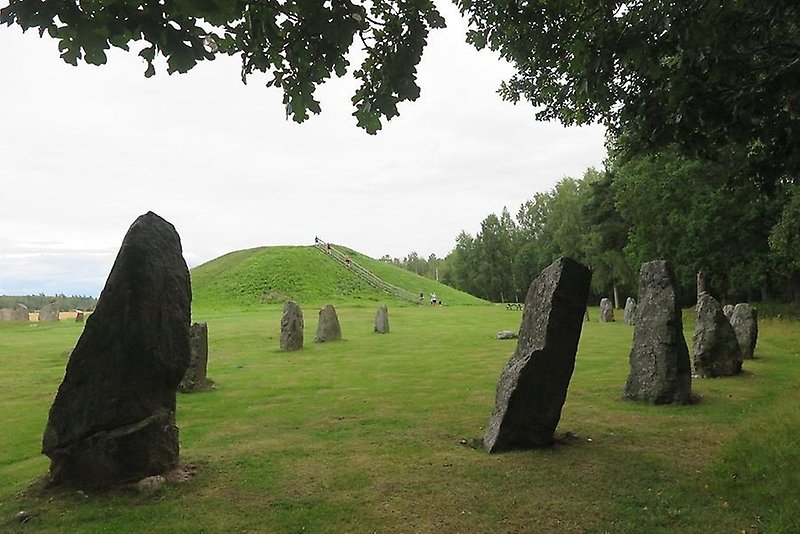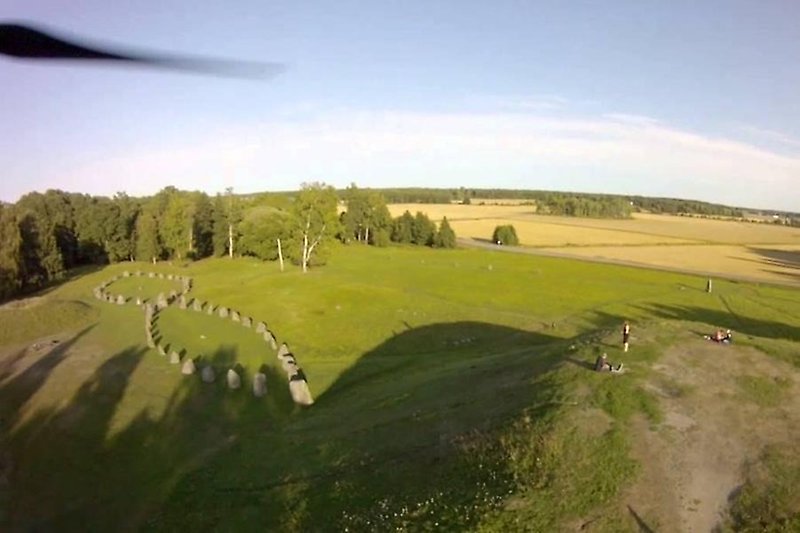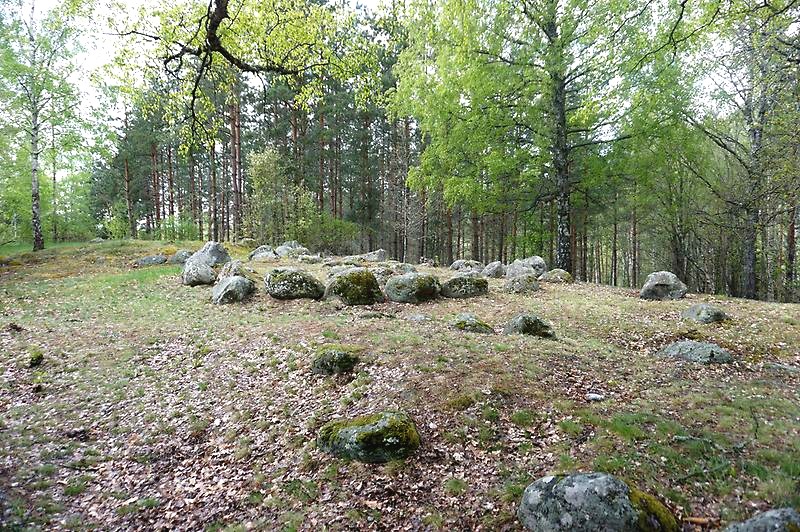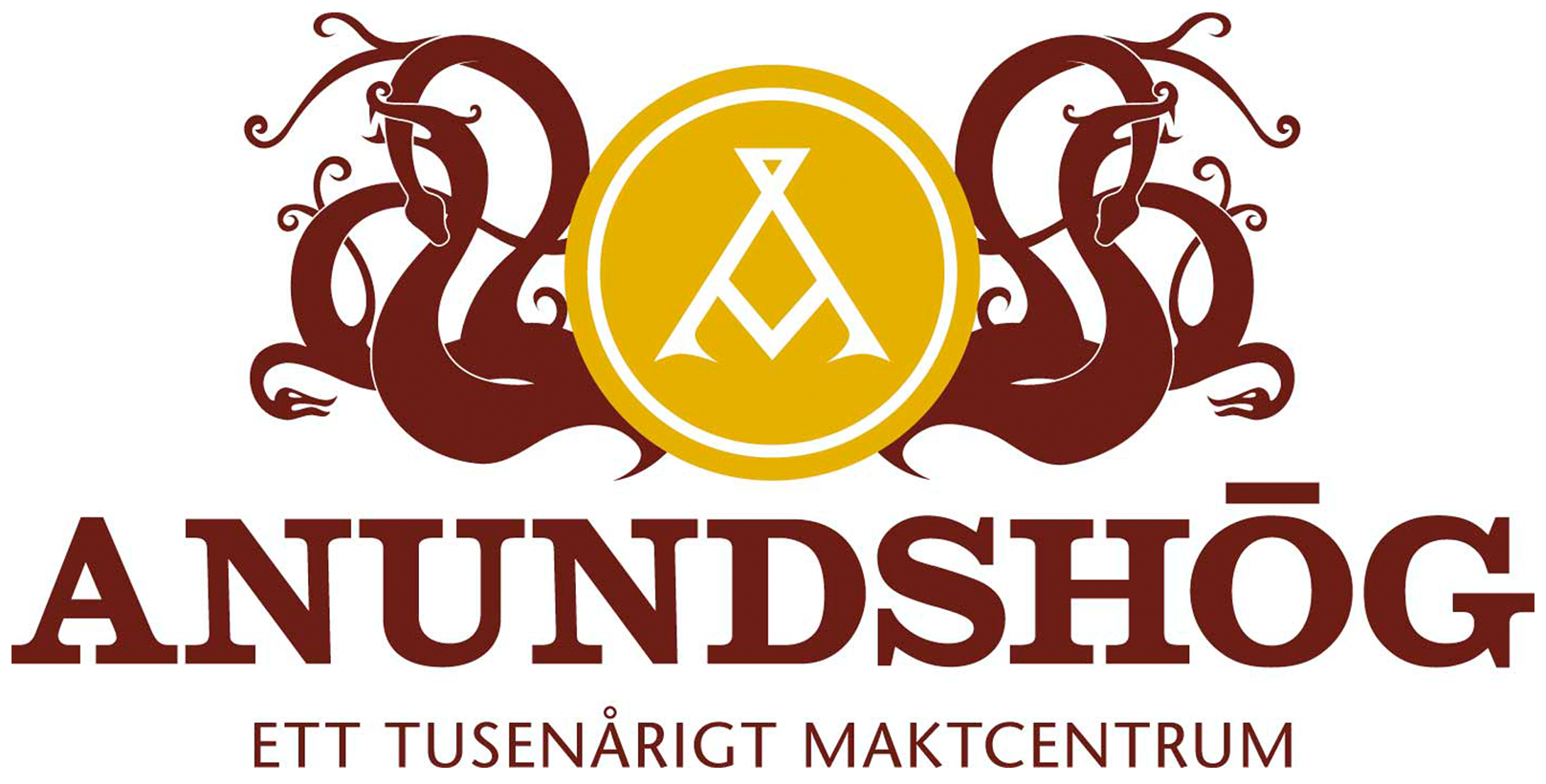Anundshög


Sweden's largest burial mound
Anundshög is Sweden’s largest burial mound. It is 9 metres high with a diameter of 64 metres. The grave is not yet excavated but by dating an underlying hearth, older than the mound we can conclude the monument was built at a time between the 5th to the 11th Century AD. The mound is built on a foundation of clay on which the burial was placed. The remains were then covered with a mound of stones, which was covered by turf and earth. Many people were involved in the work of building Sweden’s largest burial mound.
The prehistoric remains around Anundshög clearly shows that the area was the hub of a power center during the Iron Age. We will perhaps never know how great the power was which was concentrated here, but it was certainly royal power. At the beginning of the Medieval Ages it seems as if there were deliberate attempts to obliterate this power center. The ship settings were destroyed, the rune stone was toppled over and the royal estate, which must have been here, was divided up. Today not even the name of the royal estate remains as its name was replaced during the Medieval Ages by the name of the mound – Anundshög.
Burial mounds
Within the area a further 11 burial mounds and 10 round stone settings can be seen. These graves were probably raised over members of different generations of the same family. Most of the graves were plundered long ago, which can be seen from the hollows in them.
%20DSC00343.JPG)
Burial mounds.
%20DSC00362.JPG)
The grave field on the ridge.

Paving on the ridge.
Traces of settlements
In the Badelunda area there is a very large number of known prehistoric remains from the Iron Age, 500 BC – 1050 AD. Just on the ridge between the church and the E18 there are around 500 visible graves. In addition there are all those graves which are hidden under the ground. There must be at least 2,000 graves along this short stretch of the ridge.
There has been lots of activity along the ridge. The farms must have been near to each other. Crops were cultivated on small fields, cows and sheep grazed on pastureland, pigs and hens wandered freely around the farm steads, children ran around and played while the adults did the daily work of the farm. The settlements lay on what is today arable land. The small fields lay at the edge of the ridge and the pastureland lay further away from the ridge.
The grave field on the ridge
On top of the ridge 200 meters south of Anundshög there is a small grave-field with 1 mound, 9 round stone settings and 1 ship setting. They are probably from 500 – 1000 AD.
The form of a normal grave says nothing about who lies there. Women and men were buried in both mounds and stone settings. The funerary gifts usually consist of several personal possessions – jewelry and clothes buckles and perhaps some extra item. Food for the journey to the kingdom of the dead complemented the usual contents of a grave.
The ship setting is somewhat different from the large ones at Anundshög. It is built with low stones and filled with stones and earth.


